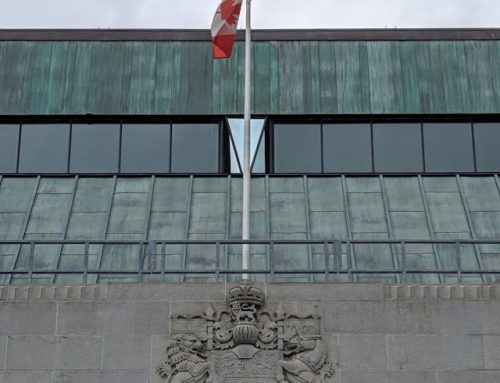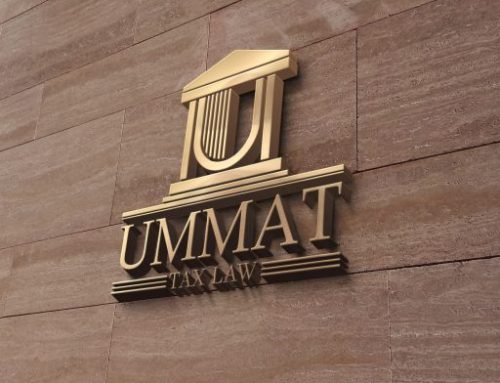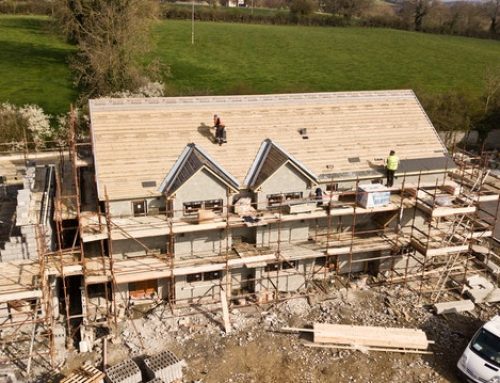Canada v. Alta Energy Luxembourg S.A.R.L. 2020 FCA 43
ACCESS ALTA ENERGY DECISION HERE
Summary
The Respondent Alta Energy Luxembourg (Alta Luxembourg) argued at the Tax Court of Canada (TCC) that the large taxable capital gain that it realized from the disposition of the shares of Alta Energy Partners Canada Ltd. (Alta Canada) was not taxable in Canada. The Minister did not agree that the provisions of the Luxembourg Convention (Treaty) applied and also relied on the general anti-avoidance rule (GAAR) to tax that taxable capital gain in Canada. The TCC allowed Alta’s Appeal. The Crown appealed to the Federal Court of Appeal (FCA) and the FCA dismissed that appeal.
Background
In the spring of 2011, Blackstone Group LP (“Blackstone Capital Partners”) and Alta Resources LLC (“Alta Resource USA”), shale oil and gas exploration and development firms, formed Alta Energy Partners LLC (“Alta US LCC”), a Delaware limited liability corporation, to acquire and develop unconventional oil and natural gas properties in North America. Blackstone Capital Partners, Alta Resources LLC and Alta US LLC decided to develop the Duvernay shale property in northwestern Alberta. On June 13th, 2011, they incorporated Alta Canada, a wholly-owned Canadian subsidiary of Alta US LLC to carry on the Canadian business. From June 2011 to April 2012, Alta Canada assembled around 62,000 acres in the Duvernay shale.
Specifically, On June 1, 2011, Alta Canada acquired PNG licences covering 14,400 net acres in the Duvernay shale from Sphere Energy Corp. On January 9, 2012, Alta Canada acquired additional PNG licences and leases covering 36,160 net acres in the Duvernay shale from TAQA North Ltd. On January 25, 2012, Alta Canada acquired all of the rights, title, and interests in 4,411 net acres from Cequence Energy Ltd. Alta Canada acquired additional licences and leases from Husky Oil Operations Ltd., Crew Energy Inc., Yoho Resources Partnership, Shell Canada Energy, and directly from the Government of Alberta, bringing Alta Canada’s net acreage in the Duvernay shale to 67,891.
Between 2012 and 2013, Alta Canada drilled six horizontal and vertical wells and was a non-operator in two additional wells.
The Restructuring
In 2011, indirect shareholders of Alta Canada were informed that the structure that had been adopted was not an ideal structure from a tax perspective because the exploration work was being done on properties in Canada. By late 2011, it was expected that the value of Alta Canada could increase substantially in the next few years.
A restructuring was initiated in 2012. As part of that restructuring, Alta Luxembourg was formed under the laws of Luxembourg and the shares of Alta Canada were transferred to it.[1] the Appellant was incorporated under the laws of Luxembourg to hold participations in Luxembourg and foreign companies. It had as its sole shareholder, Alta Energy Canada Partnership, a partnership established under the laws of Alberta.
Following the restructuring, all of the shares of the Alta Luxembourg were held by Alta Energy Canada Partnership. This partnership was formed under the laws of Alberta. The partners were the shareholders of Alta Energy Partners, LLC. In effect, the result of the restructuring was to replace Alta Energy Partners, LLC with the Alta Luxembourg and Alta Energy Canada Partnership.
In 2013, the shares of Alta Canada were sold for approximately $680 million. The resulting capital gain was in excess of $380 million.
Tax Court Decision
The Tax Court addressed two main issues, namely, whether the capital gain realized by Alta Luxembourg as a result of the sale of the shares was taxable in Canada by virtue of Article 13(4) of the Treaty, and second, whether the GAAR applied.
The shares were conceded by Alta Luxembourg to be ‘taxable Canadian property’ since the shares derived more than their 50% of their value from Canadian resource property. But Alta Luxembourg argued that the shares were treaty-protected property and thus exempt from tax in Canada. The Crown argued that Article 13(4) of the Treaty applied to tax the gain. Article 13(4) reads:
(4) Gains derived by a resident of a Contracting State from the alienation of:
(a) shares (other than shares listed on an approved stock exchange in the other Contracting State) forming part of a substantial interest in the capital stock of a company the value of which shares is derived principally from immovable property situated in that other State; or
. . .
may be taxed in that other State. For the purposes of this paragraph, the term “immovable property does not include property (other than rental property) in which the business of the company, partnership, trust or estate was carried on; and a substantial interest exists when the resident and persons related thereto own 10 percent or more of the shares of any class or the capital stock of a company.
(5) Gains from the alienation of any property, other than that referred to in paragraphs 1 to 4 shall be taxable only in the Contracting State of which the alienator is a resident.
[bolding added]
The underlying policy behind the Article is to ensure that the sale of immovable property is not simply affected by a sale of shares in relation to that property. The exception is if actual business activity is conducted on that property. Alta Luxembourg argued it was carrying on business on the properties at issue. The Crown argued that, essentially, the drilling activity was insufficient to constitute actual business activity. The Crown argued that a “working interest does not qualify as “Excluded Property” if the working interest has been set aside for future drilling or extraction activities. On this point, the Respondent submits that the phrase “property in which the business was carried on” means property in which the business of the corporation is located and carried on.”[2]
The TCC disagreed with the Crown, and quite aptly analogized that the Crown’s position, when applied to the forestry industry, would lead to absurd results. A forestry corporation generally holds timber rights under licenses granted by government bodies that allow the corporation to harvest the trees in the area designated by the license or concession. In this scenario, a forestry company will not harvest the trees on a timberland all at once. Some sections will remain untouched to allow trees to reach maturity. In the case of an oil field, large tracts of land are similarly not drilled because a vertical well “…often allows the operator to extract oil from many of the sections where no drilling takes place. Under the Respondent’s narrow test, only the section of the formation in which drilling takes place qualifies as Excluded Property.”[3]
The TCC further found that a tax treaty must be given a liberal interpretation with a view to implementing the true intention of the parties, and given this principle, the TCC found that the Treaty negotiators intended for a resource property to qualify as Excluded Property when such property is developed in accordance with the industry’s best practices.
The evidence shows that Alta Canada approached the development of its working interest on a systematic and commercially prudent basis. Alta Canada took the steps required to properly delineate the part of the formation that it controlled in order to plan how and when it would drill wells, extract hydrocarbons, and bring the hydrocarbons to the market. At each stage of development, Alta Canada used the best practices of the industry to develop its reserves. Alta Canada should not be penalized for having done so.[4]
Did the GAAR Apply?
As in most GAAR cases, Alta Luxembourg conceded that it derived a tax benefit from the restructuring of its activities and that the restructuring was not arranged primarily for a bona fide purpose other than to obtain a tax benefit (thus an avoidance transaction). The only issue left for the Court to decide was the matter of abuse. To determine whether there was abuse, Courts have adopted a two-step approach. The first step involves identifying the object, spirit and purpose of the relevant rule. The object, spirit or purpose is the rationale underlying the provision. The second step requires determining whether the avoidance transaction falls within or frustrates that rationale.
The Crown argued that the restructuring abused Articles 1, 4 and 13 of the Treaty, because, absent the restructuring, the gain would have been taxable in Canada. The TCC disagreed and went on to find that the rationale underlying the carve-out is to exempt residents of Luxembourg from Canadian taxation where there is an investment in immovable property used in a business. The significant investments by the Appellant to ‘de-risk the Duvernay shale’ constituted an investment in immovable property used in a business. The TCC found that the GAAR did not apply to preclude Alta Luxembourg from claiming the exemption provided for under Article 13(5) of the Treaty. Alta Luxembourg succeeded on both issues and the Appeal was allowed in full, with costs payable by the Crown. The Crown appealed to the FCA.
FCA Decision & Analysis
The Crown’s argument at the FCA was that the TCC erred in finding that there was no abuse of the ITA and resultantly finding that the GAAR did not apply.
The FCA was not persuaded by the Crown’s arguments relating to the underlying rationale of the applicable treaty provisions, since those arguments contained references to general principles “…and references to general commentary or decisions that [did] not address the rationale for the provisions in issue in this case.”[5] Webb J. indicated that one particular paragraph of the Crown’s factum was the closest to identifying the rationale of the provisions. That paragraph is as follows[6]:
- Articles 1, 4 and 13(4) of the Convention, together, are intended to grant a particular treaty benefit to Luxembourg investors whose investments in specific taxable Canadian property gives rise to gains for them, in Luxembourg. Those provisions are not intended to benefit entities who do not have the potential to realize income in Luxembourg, nor have any commercial or economic ties therewith. Such situations are wholly dissimilar to the relationships or transactions that are contemplated by those provisions of the Convention.
The three key aspects identified by Webb J. in that paragraph are as follows:
(a) the change in the identity of who will qualify for the exemption from “residents” to “investors”;
(b) the statement that the provisions “are not intended to benefit entities who do not have the potential to realize income in Luxembourg”, which would add a qualification that the “entity” must have the potential to earn income in Luxembourg; and
(c) the statement that the provisions “are not intended to benefit entities who do not have … any commercial or economic ties” with Luxembourg, which would add a requirement for commercial or economic ties to Luxembourg.
- a) Resident versus Investor – the FCA draws attention to the explicit use of ‘resident’ and not ‘investor’ in the relevant Treaty Article.
- b) Potential to Realize Income in Luxembourg – The FCA found that any issue with respect to taxable income earned by the Luxembourg entity was ultimately an issue for the Luxembourg authorities. The entity is certainly liable to tax in Luxembourg by virtue of being a resident. The quantum of tax payable was not considered to be an appropriate argument for the Crown to raise on Appeal.
- c) Commercial Ties – The Crown’s argument was that the underlying purpose of the exemption in Article 13(4) was to benefit persons with some economic or commercial ties with Luxembourg. This argument was dismissed because there is simply no distinction in the Treaty between residents with strong economic commercial ties and those with weak or no ties at all.
The FCA further agreed with the decision in MIL Investments[7] in that it was also unable to find any object, spirit or purpose of Article 13(4) other than the plain text itself. And since that Article operated as it was intended to operate, there was no abuse. The Appeal was dismissed.
Call Ummat Tax Law with your international tax dispute issues.
Takeaway
The trial was primarily concerned with the extent of the business activity on the property, as a factual matter. The GAAR was far more prominent (being the sole basis for appeal) at the FCA and the TCC was found not to have erred. It is precisely this type of issue the Principal Purpose Test under the Multi-Lateral Instrument (MLI) seeks to address and likely will address going forward.
[1] This transfer of shares was a taxable transaction. The CRA agreed that the fair market value of the shares of Alta Canada at that time was equal to the adjusted cost base of these shares. Therefore, no capital gain was realized on the transfer of the shares of Alta Canada to Alta Luxembourg.
[2]Alta Energy Luxembourg SARL v HMQ 2018 TCC 152 (Alta Trial), at para 49.
[3] ibid, at para. 60.
[4] ibid, at para 65.
[5] Canada v. Alta Energy Luxembourg S.A.R.L. 2020 FCA 43, at para. 35.
[6] Ibid, at para. 38.
[7] MIL (Investments) S.A. v. Canada 2007 FCA 236.




